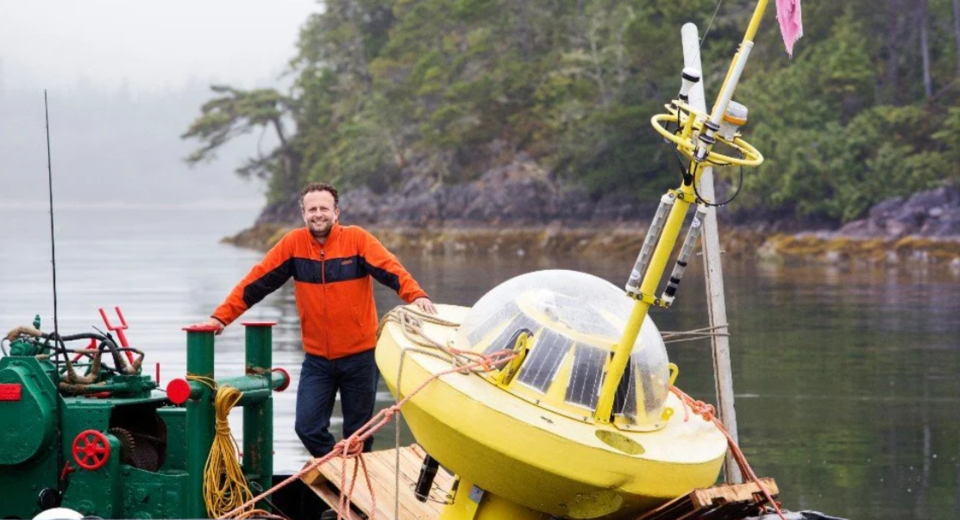A cutting-edge clean energy project to use ocean waves to power a coastal First Nation’s return to its traditional territory on Vancouver Island’s wild west coast just got a surge in funding.
To buoy the next stages of the Mowachaht/Muchalaht First Nation’s (MMFN) Yuquot Wave Energy Project, $1 million was granted to one of the initiative’s partners, the University of Victoria’s Pacific Regional Institute for Marine Energy Discovery (PRIMED).
“This [project] is such an exciting, pure and wonderful example of an Indigenous-led, community-based resurgence through clean energy,” said Brad Buckham, chair of UVic’s mechanical engineering department and co-director of PRIMED.
The project is developing a first-of-its-kind renewable energy microgrid powered by wave energy at Yuquot on Nootka Island, the traditional home of the MMFN before being forcibly relocated as a result of colonialism decades ago.
In planning their return, the MMFN do not want to rely on dirty diesel generators to provide electricity at Yuquot, which is off-grid, or not connected to the province’s electrical network, said Buckham.
The funding was granted by TD Bank to 10 projects across Canada that involved people and communities disproportionately affected by climate change and the transition to a low-carbon economy.
The MMFN is demonstrating leadership by exploring a renewable microgrid that relies on the natural advantages of its location, such as wave energy, Buckham said. Once developed, the system can be a case study for small coastal communities across Canada, he added.
Wave energy, especially for small-scale and close-to-shore projects, is more predictable than other types of renewables, such as wind or solar, Buckham said. Plus, it generates the most energy in winter when electricity demand is typically at its highest. It can be paired up with solar power in summer when wave energy is reduced.
The technology that will be used at Yuquot involves floating platforms close to shore attached to lines that move with the swells. The energy is then transmitted through the lines to a nearby electric facility on land that distributes it to households or buildings.
The advantage of this INWave system, designed by South Korean project partner INGINE, is it doesn’t rely on extremely costly underwater submarine cables or expensive ocean equipment systems that are hard to build or repair and are vulnerable to corrosion from salt water.
As a result, the system will reduce the investment, operation and maintenance costs by a third compared to other wave energy systems, according to the project website.
Work on the Yuquot project has been underway for two years, Buckham said.
Marine buoys were deployed at the site to gather data related to wave energy, including size, direction and regularity, to analyze the power generation potential and run computer models and assessments of the project to help its design. After that, the plan is to get the project shovel-ready over the next two years, Buckham said.
Ocean energy — whether it involves wind, currents, tides or waves — is a global resource and potentially a game-changer when it comes to increasing the uptake of renewable energy that the climate crisis demands, he said.
“In terms of untapped potential, wave energy is the runaway winner,” he said.
Small-scale community projects like this can model the benefits and provide the necessary data to allow larger-scale initiatives to get underway.
“Our approach is to create change one community at a time,” Buckham said.
“If we can help enable [MMFN] to take these steps, they set an example that has tremendous power.”





